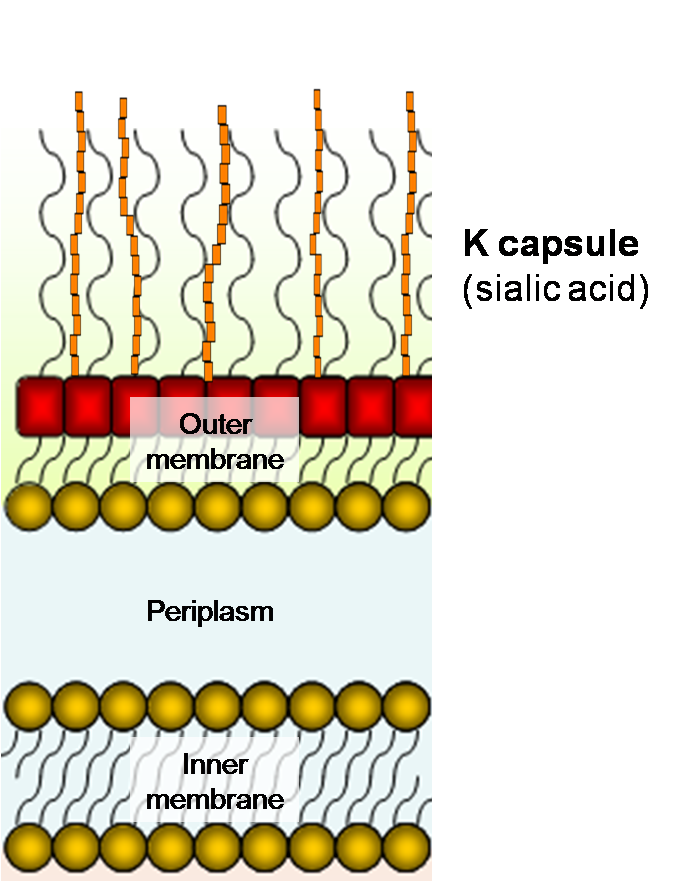Team:NYMU-Taipei/Project/Chassis
From 2009.igem.org
| Home | Project Overview: | Chassis | Receptors | Removal | Experiments and Parts | F.A.Q | About Us |
Contents[hide] |
Motivation
Why do we use bacteria to catch viruses? Nowadays, people have been using different methods to fight against viruses, including using nonliving molecules or particles, such as vaccines or nano particles[1], and living cells. The 07Ljubljana iGEM team has been devoted to modify human cells to fight against HIV[2], others also try to use erythrocytes to trap coxsackievirus[3].
We decided to use living cells because they can be regulated. We chose to use bacteria as the host of our design, rather directly modify human cells. We think bacteria to be an ideal instrument because they cannot serve for viral propagation and they are easy to culture.

Selecting the Host Cell
We chose E.coli to be our host cell as its genome type is well known. The strain we chose has the ability alleviate codon bias and enhance disulfide bond formation.
Rosetta-gami™ 2[4] Genotype:
Δ(ara-leu)7697 ΔlacX74 ΔphoA PvuII phoR araD139 ahpC galE galK rpsL (DE3) F′[lac+ lacIq pro] gor522::Tn10 trxB pLysSRARE2 (CamR, StrR, TetR)
We also found that a probiotic strain of E. Coli Nissle 1917 that has been experimented on mice[5]. However it still causes a death rate for about 40% resulting from the response associated with LPS. We then found out that VNP20009, a genetically modified strain of Salmonella typhimurium has been using in the treatment to patients with metastatic melanoma[6]. This strain was attenuated by chromosomal deletion of the msbB gene, reducing the toxicity associated with lipopolysaccharide (LPS) by preventing the addition of a terminal myristyl group to the lipid A domain.
Methods
There are some safety concerns about delivering bacteria to the human body. The 07 UC Berkerley iGEM[7] team had tried to put bacteria into the human blood stream, and we take their project as a reference.
How do we safely administer our E. coli into the infected tissues?
- We chose a nonpathogenic strain
- We remove the endotoxin, lipidA, which can be lethal.
- We modified the sialic acid on the outer membrane to mimic human receptors and avoid immune response.
This picture shows the membrane of E. coli. The dominant feature of the outer membrane is the lipopolysaccharide(LPS). These molecules are the prime targets of the antibodies produced by the human immune system in response to bacterial infection. The reason for causing immune response lies in the Lipid A portion of LPS, also known as endotoxin. The endotoxin causes the release of a kind of cytokine called tumor necrosis factor α (TNFα) and then the following inflammatory response. This response is important to our immune system. However, an overdose of lipid X can cause too much cytokine or chemokines, resulting in systemic inflammation, multiple organ failure and even death. We delete the msbB gene and reduced the toxicity associated with lipopolysaccharide (LPS).
In addition, one of our receptor – sialic acid also provides the effect of avoiding hypo immunity. Research shows that 80% of blood culture isolates of E. coli K-1 are resistant to in vitro phagocytosis in human fresh serum. Some strains of E.coli have a specific type of K antigen called K1, which is made up of sialic acid. Because Polysialc acid often acts as receptors on mammalian cells, the human immune system does not recognize sialic acid as foreign. So we modified the sialic acid to catch viruses as well as avoid immune respond.
First or Final Guard
Macrophages are the primary infiltrating cells at the site of inflammation. They also act as antigen presenting cells, initiating the adaptive immune response. Most important thing to our project is that it can be activated in the presence of LPS.[8] We use phagocytosis as our way of removing ViroCatcher

References
[1] [http://www.physorg.com/news167381259.html Taiwan scientists unveil new weapon in swine flu fight]. July 21st, 2009
[2] LjubljanaiGEM2007 wiki
[3] [http://infectious-diseases.jwatch.org/cgi/content/citation/2005/923/2 Richard T. Ellison III, MD: Erythrocyte Viral Traps: A Novel Antiviral Strategy.] Proc Natl Acad Sci U S A 2005, 102:12897-902
[4] [http://www.biocompare.com/Articles/ProductReview/981/Rosetta-gami--B-Host-Strains-From-Novagen.html The detail of Rosetta-gami™ 2]
[5] [http://iai.asm.org/cgi/content/abstract/73/3/1452 Andreas Sturm, Klaus Rilling, Daniel C. Baumgart, Konstantinos Gargas, Tay Abou-Ghazalé, Bärbel Raupach, Jana Eckert, Ralf. R. Schumann, Corinne Enders, Ulrich Sonnenborn, Bertram Wiedenmann, and Axel U. Dignass: Escherichia coli Nissle 1917 Distinctively Modulates T-Cell Cycling and Expansion via Toll-Like Receptor 2 Signaling . Infection and Immunity, p. 1452-1465, Vol. 73, No. 3]
[6] [http://www.pnas.org/content/104/24/10170.abstract Ming Zhao, Jack Geller, Huaiyu Ma, Meng Yang, Sheldon Penman, and Robert M. Hoffman: Monotherapy with a tumor-targeting mutant of Salmonella typhimurium cures orthotopic metastatic mouse models of human prostate cancer.]
[7] BerkiGEM2007 wiki
[8] [http://www.biomedcentral.com/content/pdf/1472-6882-8-1.pdf Sudipta Tripathi, David Bruch and Dilip S Kittur: Ginger extract inhibits LPS induced macrophage activation and function.BMC Complement Altern Med.] 2008 Jan 3;8:1.
 "
"


